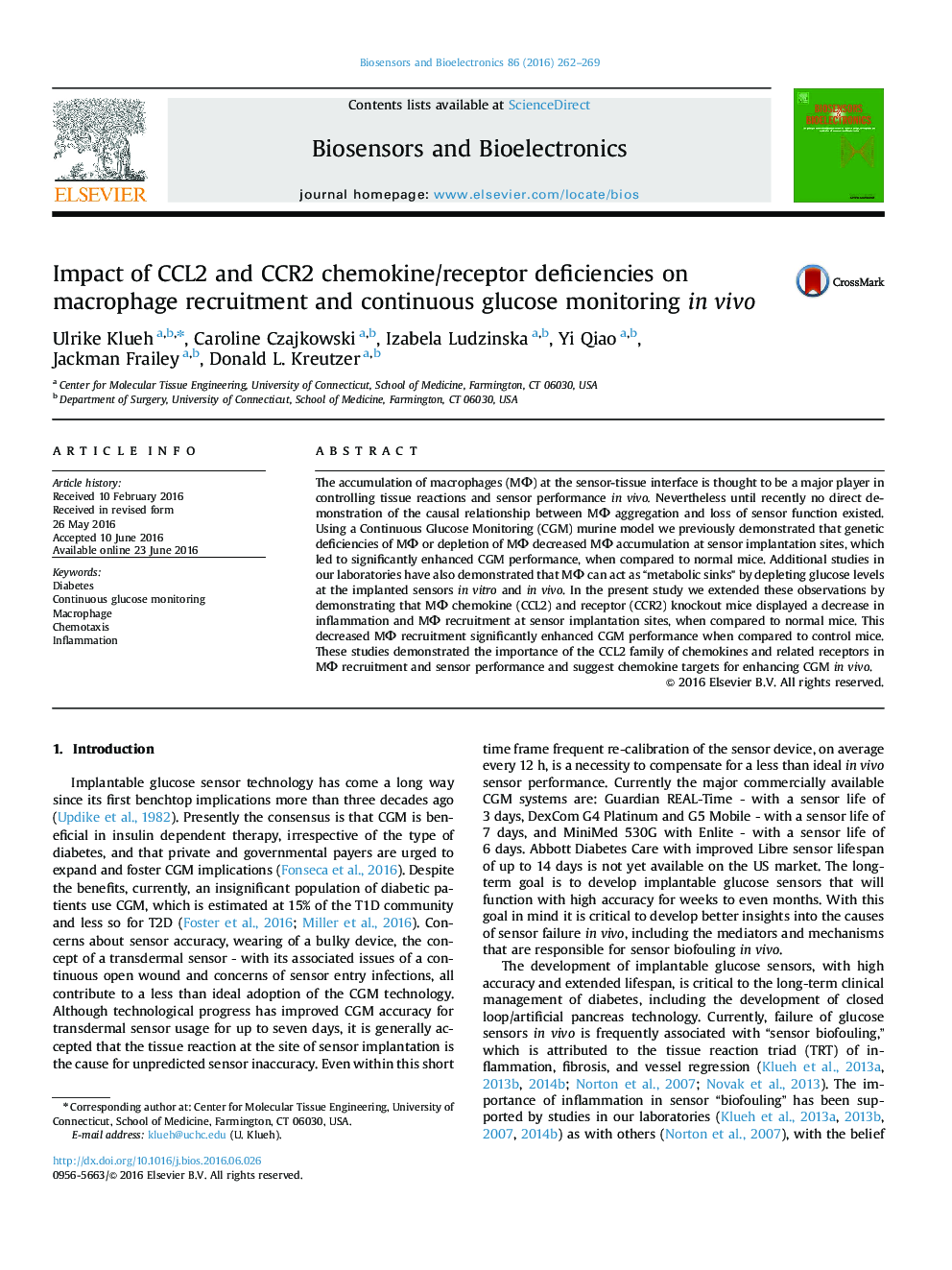| Article ID | Journal | Published Year | Pages | File Type |
|---|---|---|---|---|
| 7230108 | Biosensors and Bioelectronics | 2016 | 8 Pages |
Abstract
The accumulation of macrophages (MΦ) at the sensor-tissue interface is thought to be a major player in controlling tissue reactions and sensor performance in vivo. Nevertheless until recently no direct demonstration of the causal relationship between MΦ aggregation and loss of sensor function existed. Using a Continuous Glucose Monitoring (CGM) murine model we previously demonstrated that genetic deficiencies of MΦ or depletion of MΦ decreased MΦ accumulation at sensor implantation sites, which led to significantly enhanced CGM performance, when compared to normal mice. Additional studies in our laboratories have also demonstrated that MΦ can act as “metabolic sinks” by depleting glucose levels at the implanted sensors in vitro and in vivo. In the present study we extended these observations by demonstrating that MΦ chemokine (CCL2) and receptor (CCR2) knockout mice displayed a decrease in inflammation and MΦ recruitment at sensor implantation sites, when compared to normal mice. This decreased MΦ recruitment significantly enhanced CGM performance when compared to control mice. These studies demonstrated the importance of the CCL2 family of chemokines and related receptors in MΦ recruitment and sensor performance and suggest chemokine targets for enhancing CGM in vivo.
Related Topics
Physical Sciences and Engineering
Chemistry
Analytical Chemistry
Authors
Ulrike Klueh, Caroline Czajkowski, Izabela Ludzinska, Yi Qiao, Jackman Frailey, Donald L. Kreutzer,
